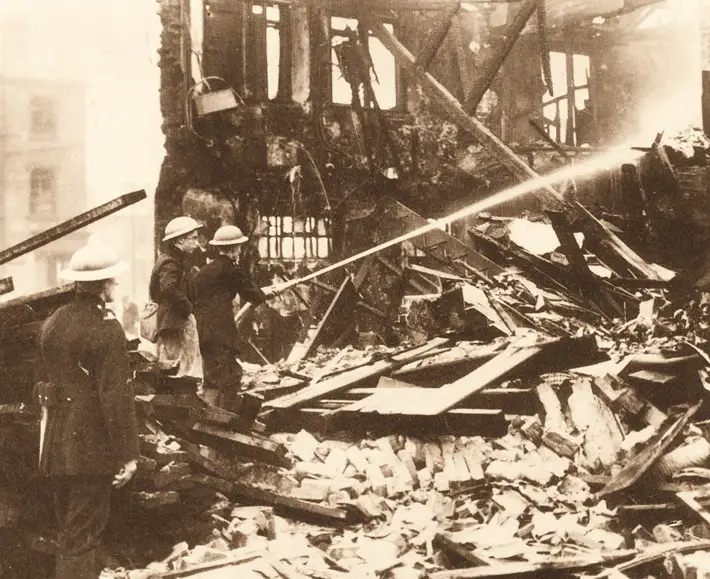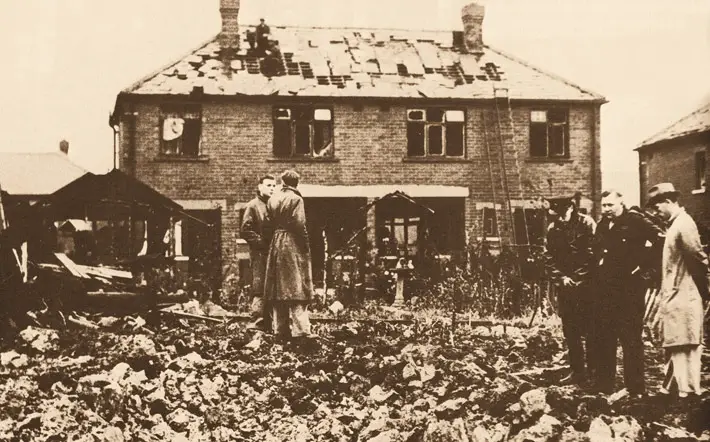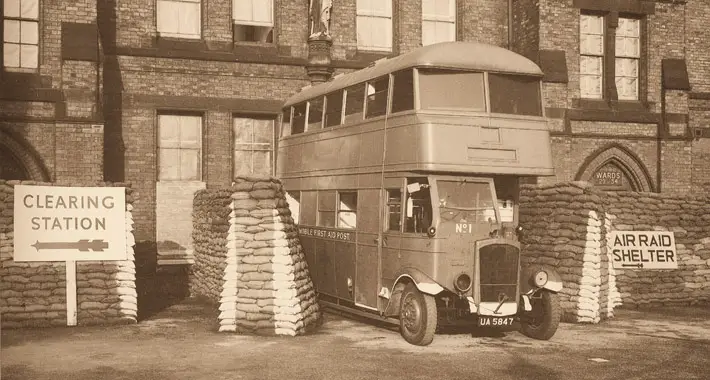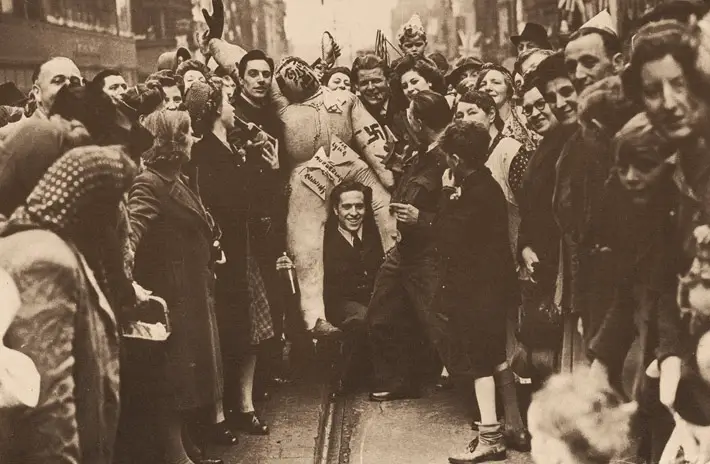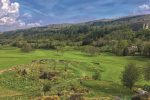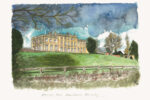The Story of the Leeds Blitz
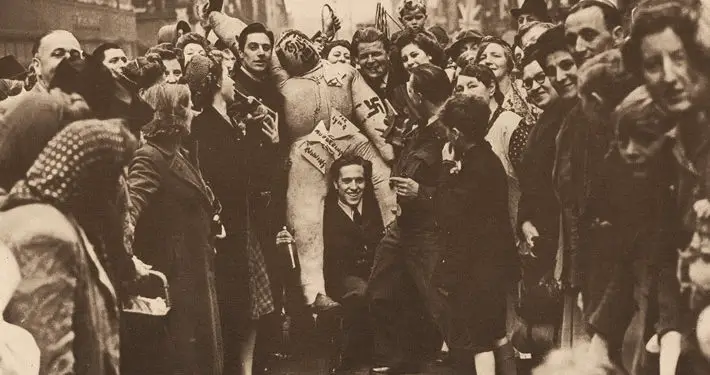
By Paul Chrystal
Throughout the Second World War seventy-seven Leeds people were killed and 197 buildings were destroyed with 7,623 damaged, and subsequently repaired, in nine raids and eighty-seven air-raid alerts.
There were twenty-four major fires. Leeds firefighters were comparatively underworked and sent crews to deal with fires in London, Liverpool, York, Coventry, Sheffield, Birmingham and Hull where the bombing was, York apart, much heavier.
“Devastating raid”
On 1–2 September 1940, between 3,000 and 4,000 incendiaries and fourteen high-explosive bombs were dropped on the city. The night of 14–15 March 1941 saw Leeds’s most devastating raid, the so-called ‘Quarter Blitz’ after the tonnage of bombs dropped.
In Morley there was damage to property in Spenslea Grove, Homefield Avenue and Model Road. Casualties included one fatal, and four injured.
In the city centre incendiaries fell on Aire Street; the Town Hall and City Museum were badly damaged, partially destroying the Law Library in the Town Hall and some of the Egyptology collection in the museum.
Kirkstall power station was a target. The Hepworth Arcade and the streets around Water Lane were alight. By midnight Mill Hill Chapel, the Royal Exchange Building, Denby & Spink’s furniture store and the Yorkshire Post building had been hit.
“Further damage”
These were followed by bombs at Gipton, Headingley, Woodhouse and Roundhay roads. There was further damage at Fairbairn. Lawson’s, Greenwood & Batleys, Wellington Street, Wellington Road goods yard and Central and City stations.
The infirmary, Town Hall, City Museum, Kirkgate Market, St Peter’s School, Park Square, Hotel Metropole and Quarry Hill flats were also hit.
A total of 25 tons of bombs fell on Leeds during the raid – a quarter of the 100 tons used as the threshold to qualify as a ‘major raid’.
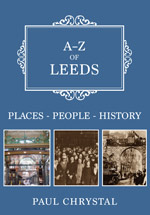 This was bad enough, but to put it into perspective by comparison that same night in Glasgow 203 aircraft dropped 231 tons of high explosives and 1,650 incendiaries, while in Sheffield 117 aircraft dropped 83 tons of high explosives and 328 incendiaries.
This was bad enough, but to put it into perspective by comparison that same night in Glasgow 203 aircraft dropped 231 tons of high explosives and 1,650 incendiaries, while in Sheffield 117 aircraft dropped 83 tons of high explosives and 328 incendiaries.
The bombers over Leeds were probably Junkers Ju-88s and Dornier Do-17s if those shot down in other parts of Yorkshire that night are anything to go by.
Article taken from ‘A-Z of Leeds’ by Paul Chrystal, published by Amberley Publishing, £14.99 paperback
